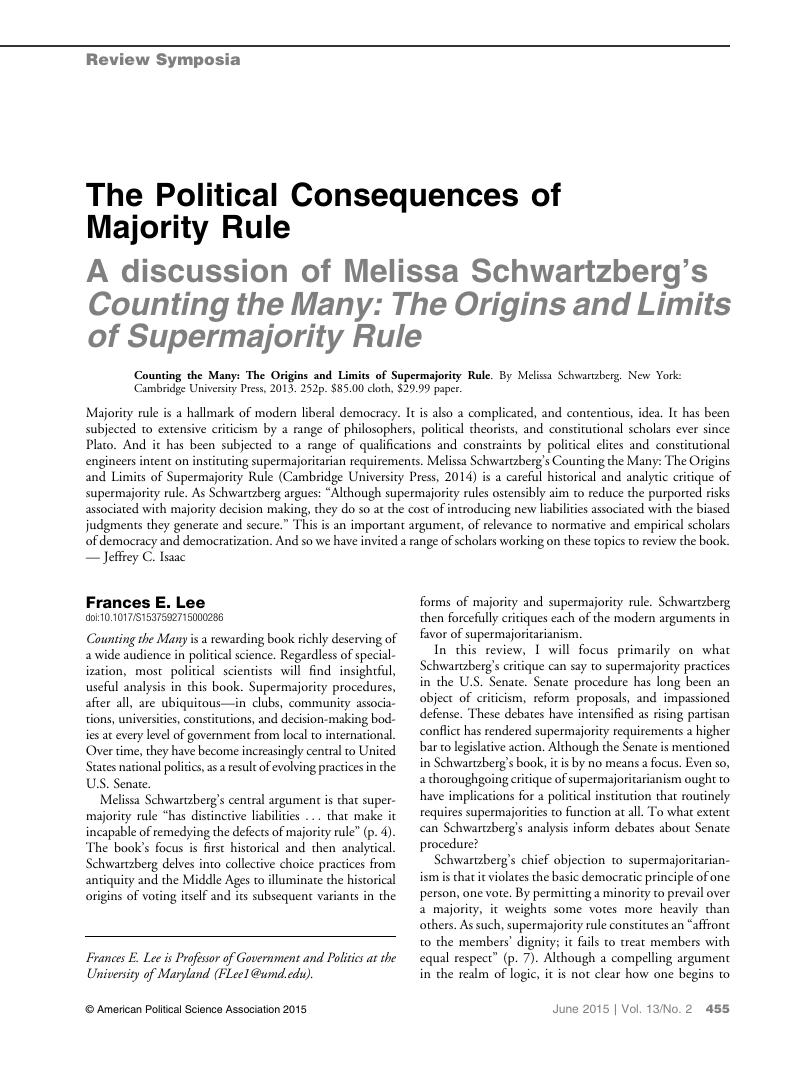No CrossRef data available.
Article contents
A discussion of Melissa Schwartzberg's Counting the Many: The Origins and Limits of Supermajority Rule
Published online by Cambridge University Press: 18 June 2015
Abstract
An abstract is not available for this content so a preview has been provided. Please use the Get access link above for information on how to access this content.

- Type
- Review Symposia: The Political Consequences of Majority Rule
- Information
- Copyright
- Copyright © American Political Science Association 2015
References
Binder, Sarah A. 2014. “The Senate’s Partisan Fever (in 4 Charts).” The Monkey Cage Blog, Washington Post, http://www.washingtonpost.com/blogs/monkeycage/wp/2014/07/22/the-senates-partisan-fever-in-4-charts/
; accessed July 22.
Google Scholar
Buchanan, James M., and Tullock, Gordon. 1962. The Calculus of Consent: Logical Foundations of Constitutional Democracy. Ann Arbor: University of Michigan Press.CrossRefGoogle Scholar
Casella, Alessandra. 2012. Storable Votes: Protecting the Minority Voice. New York: Oxford University Press.Google Scholar
Casella, Alessandra, Turban, Sebastien, and Wawro, Gregory. 2014. “Storable Votes and Judicial Nominations in the U.S. Senate.” National Bureau of Economic Research, Working Paper No. 20461.Google Scholar
Wawro, Gregory J., and Schickler, Eric. 2006. Filibuster: Obstruction and Lawmaking in the U.S. Senate. Princeton, NJ: Princeton University Press.Google Scholar




